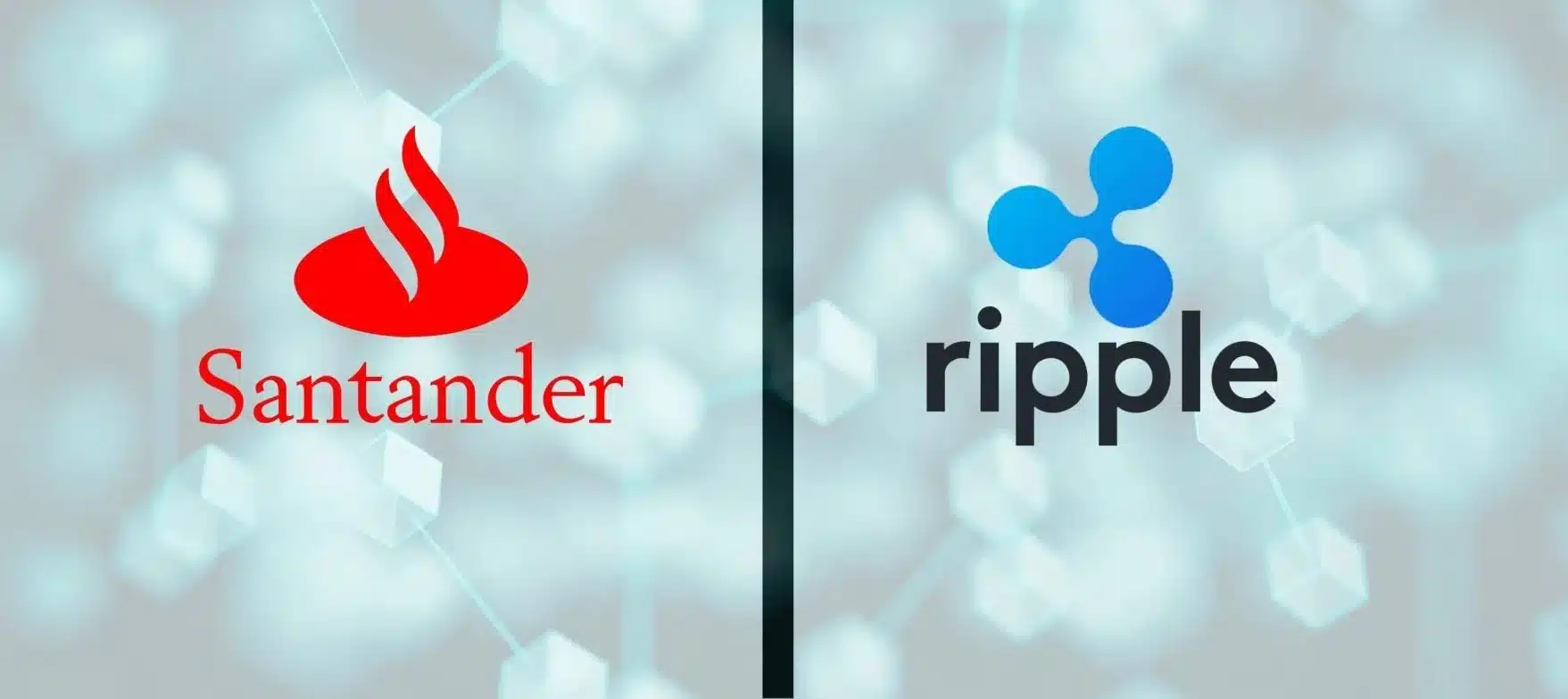- Santander deploys Ripple tech for live cross-border payment solution.
- Trump’s executive order boosts institutional interest in XRP adoption.
- Over 7.1 billion XRP quietly accumulated by major financial players.
Santander Bank has reportedly launched a Ripple-powered blockchain payment system, which is now confirmed to be live and fully functional. The move highlights a significant shift as one of Europe’s largest banks quietly integrates distributed ledger technology into its international operations.
According to crypto researcher SMQKE, Santander’s One Pay FX is not in testing but actively running. The system allows real-time cross-border payments, and special emphasis is placed on paving the way to better payment streams between Europe and South America.
The document shared on SMQKE’s tweet names Santander as one of the first banks to embrace blockchain and use it in the traditional banking context. One Pay FX will be faster and more transparent than cross-border payments on the traditional system, but it works through Ripple and subsequently runs on its infrastructure.
Also Read: Nearly 100M DOGE Set to Hit Market—Will This Trigger a Major Price Move?
This quiet launch indicates the shift in use, as Ripple moves out of speculation and into definitive use by institutions. The transition demonstrates how blockchain is already being used to address actual banking requirements, as opposed to the concept of blockchain as a future technology.
Yes, Santander implemented a fully functioning payment system FROM RIPPLE that runs on blockchain technology.✅
Documented.📝👇 pic.twitter.com/fRhuG8UKtJ
— SMQKE (@SMQKEDQG) July 27, 2025
Ripple Integration Signals Shift in Global Bank Infrastructure
Santander’s partnership with Ripple is a step toward modernizing outdated cross-border payment systems. By integrating blockchain into its operations, the bank enhances transaction speed, cost-efficiency, and security.
One Pay FX has been mentioned over the years, but the document presented by SMQKE can indeed provide reliable evidence of its practical use. This will put Ripple in line with an active banking product utilized by an international financial institution.
Other financial bodies may be on the fringe of adopting the same technologies based on community reaction. Although not officially reported, it indicates that institutions are gaining interest in creating blockchain technologies on large-scale financial networks.
The rollout was not accompanied by any other statements made by Santander regarding it. However, the fact that it silently implemented this technology points to the continuous change in international banking towards innovative infrastructures.
Growing Political and Institutional Momentum Behind XRP
Institutional interest in XRP continues to rise following recent political signals and regulatory clarity. President Donald Trump’s signing of Executive Order 14178 put the central bank digital currency initiatives on hold, which indirectly increased support for the idea of assetizing and privatizing, like XRP.
Crypto analyst Levi encouraged the XRP community to take note of political developments, as Trump said he considers XRP a strategic asset. This recommendation has energized investors and institutions.
Furthermore, on-chain data shows that whale wallets took possession of 7.1 billion XRP tokens during a previous price rise. In the meantime, Ripple introduced RLUSD reserves, which are managed by BNY Mellon, and ProShares introduced XRP-oriented ETFs listed on NYSE Arca.
Conclusion
The confirmed launch of Santander’s Ripple-based payment system provides solid evidence of blockchain’s growing role in global banking. With One Pay FX now live, and institutional momentum building behind XRP, Ripple’s technology is quietly shaping the future of cross-border finance.
Also Read: Ray Dalio Recommends 15% in Bitcoin and Gold Amid U.S. Debt Explosion

